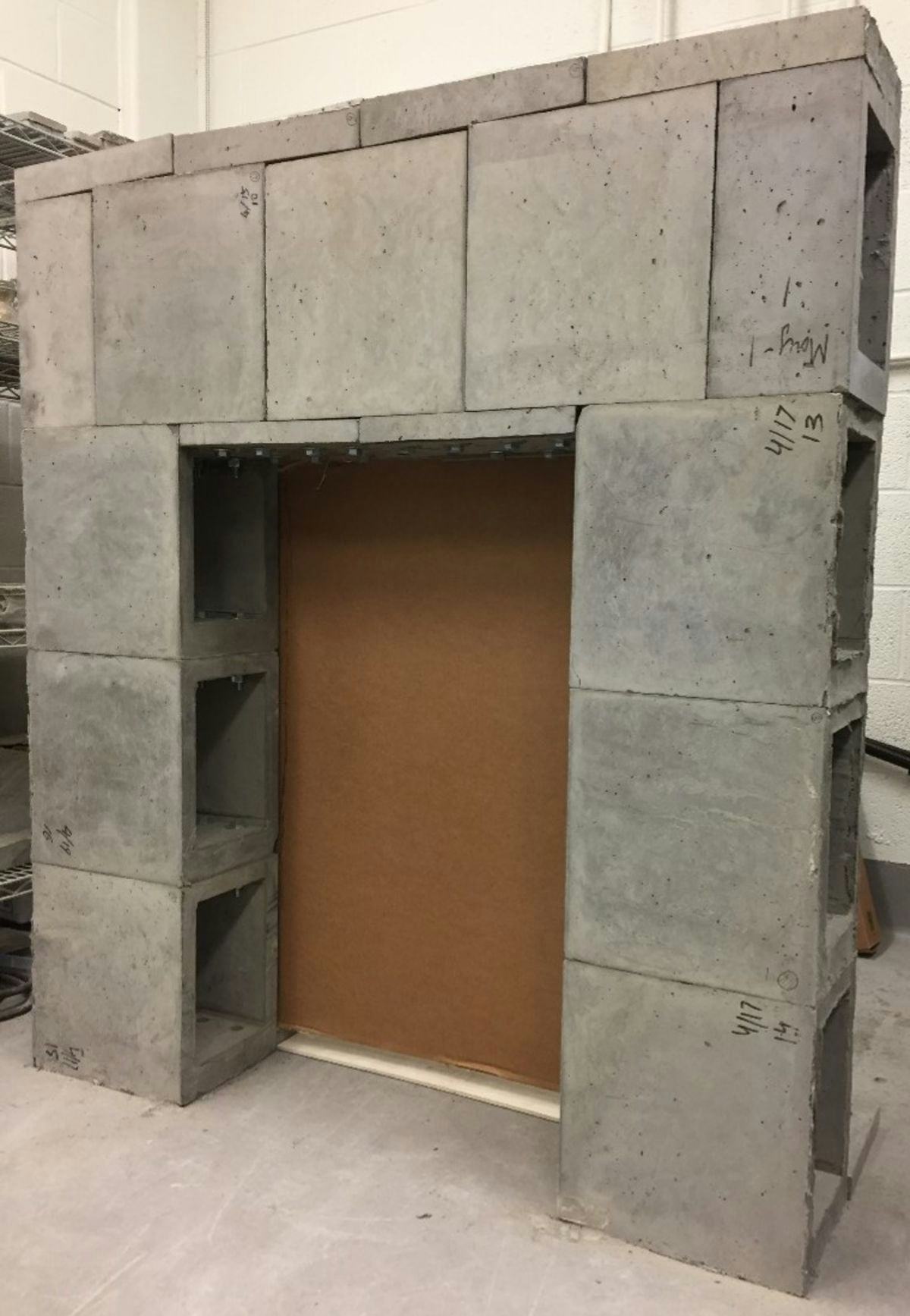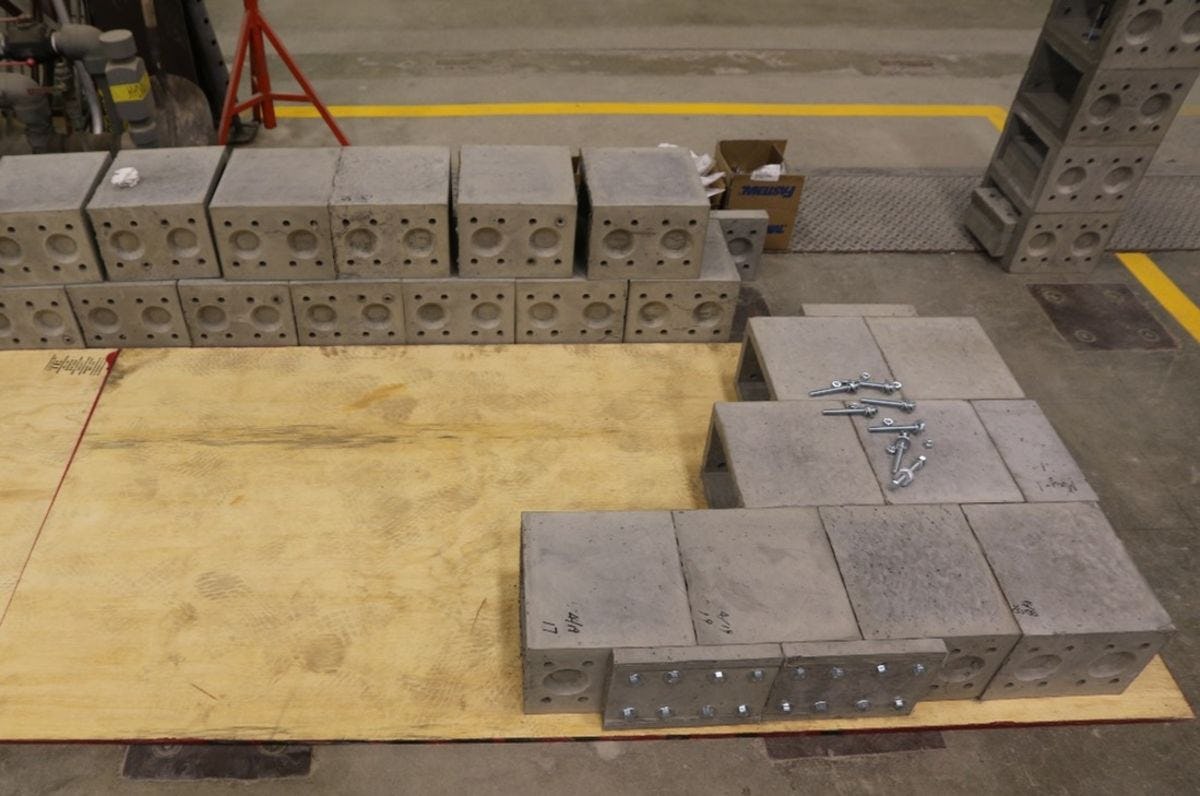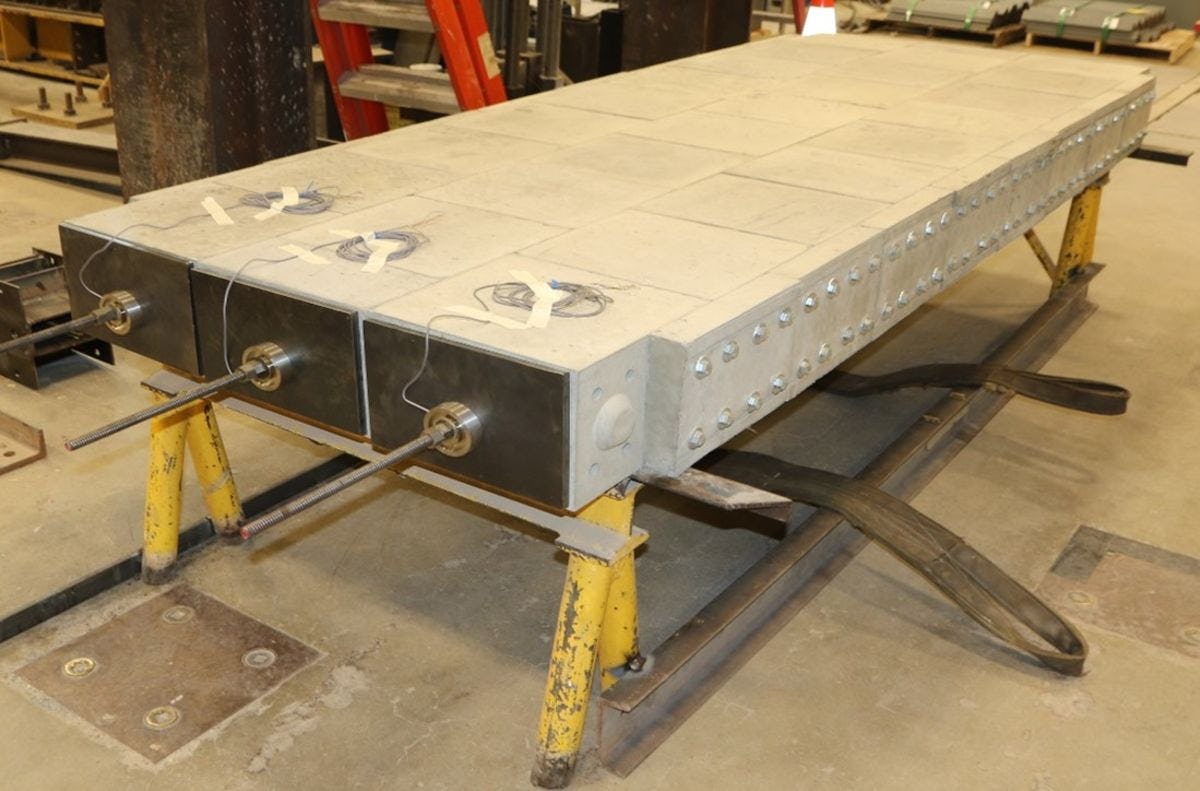Civil engineering professor is developing smart blocks to construct–and reconstruct–modular bridges, buildings, and other structures
When you think of stepping on a LEGO® block, you’re apt to recall the searing pain those impenetrable sharp corners and knobs bring to the tender sole of your foot. But Yi Bao, assistant professor of civil engineering at Stevens Institute of Technology, is working to ensure that everyone can easily walk—and drive—on LEGO®-inspired, cement-based, modular building bricks that could transform the very soul of civil engineering, improving the structure, safety, and sustainability of construction projects worldwide.
Building better bridges and buildings, brick by brick
Bao’s research is focused on developing sustainable, resilient, and smart infrastructure by seamlessly integrating advanced materials, sensors, structural design, and artificial intelligent algorithms. The goal is to improve the design, construction, and management of civil engineering structures such as bridges and buildings.
“The current construction of engineering structures faces a variety of challenges, such as shortage of skilled labor, low adaptation to new technologies, and increasing concerns for negative impacts on the environment,” Bao said. “These challenges have significantly compromised the productivity and economic benefits of the construction industry. Further, construction activities have been linked to significant emissions, particularly CO2, associated with global warming.”
These are the issues that drive Bao to ponder and pursue new approaches to construction, from design to materials to manufacturing to the building process to demolition and recycling. They are also topics he and his colleagues often discuss.
“One day we were talking about how to further improve the sustainability and functionality of structures,” he recalled. “Currently, some projects do use prefabricated elements to accelerate construction of bridges, but those elements are very large. Moreover, at the end of the service life of a bridge or a building, a lot of the material is still in good condition, but it can’t be disassembled and reused unless you crush it into fine particles. That’s a sophisticated manufacturing process that consumes time, energy, and expense. But if you don’t recycle it, it’s a waste of material.”
And then, inspiration struck.
“All of a sudden, we thought we could make something like LEGO® blocks that could be efficiently assembled, disassembled, and reassembled into something completely different,” he said. “With less construction and demolition waste and less consumption of fresh materials, it could also reduce carbon emissions and save costs. Steel bolts could run through small holes in the blocks for sturdy installation.”
And so Bao’s LEGO®-inspired modular block research project was born. It’s an entirely new paradigm of construction, using bio-inspired smart bricks made from an innovative bendable, cement-based composite material that Bao helped create with fellow Stevens professor Weina Meng and professor Victor Li from the University of Michigan.
“Traditional concrete has the mechanical strength to bear loads, but it’s quite brittle and can easily fracture, and even a single crack may cause a dangerous collapse,” Bao said. “Our advanced material is both stronger and more durable, with fine fibers to significantly improve cracking resistance. We’ve been developing the material to be self-sensing, like the human nervous system, and self-healing, like human skin, and even self-cleaning. That means it can sense and alert people to specific damage and heal microcracks to significantly improve safety and long-term durability, while also looking good for years.”
The pandemic provided additional motivation for Bao’s research.
“So many people are now working from home, and maybe they need more workspace,” he explained. “Imagine if we built houses and office buildings with standard blocks, so if you wanted a bigger living room in your home, you could just use more blocks to extend the room, or if your office conference room were no longer needed, you could rearrange blocks to make smaller spaces to meet virtually. It could generate a whole new market and new jobs for construction and manufacturing.”
The scope also extends into developing robots to build and monitor the modular structures, reducing construction time and environmental impact while improving the safety of the workers and all the people who use the sturdier buildings, bridges, and other construction projects.
Securing a smarter future for civil engineering structures
It’s a wide-ranging project with deep roots reaching back into Bao’s early years in Shijiazhuang, a growing city in northeastern China.
“I experienced the rapid modernization of cities when I was in middle school and high school and saw a lot of bridges and high-rise buildings changing the landscape every day,” he recalled. “My hometown became more like a modern city, and when I saw how it improved people’s lives, I decided to study civil engineering.”
While he was a student at Southwest Jiaotong University, the Great Wenchuan earthquake—reaching a magnitude of 8 on the Richter scale—occurred, with its epicenter less than 100 miles from his college. Experiencing the earthquake and its catastrophic consequences to nearby families inspired him to focus his studies on improving civil engineering structures. Four years later, he emigrated to the United States to earn his Ph.D., and the nation's civil infrastructure needs reinforced his decision to improve construction design to enhance public safety and the quality of life.
Today, he’s both mentoring and learning from the next generation of civil engineers and innovators.
“I teach undergraduate and graduate students about analysis, design, monitoring, and management of civil engineering structures, and mentor students to conduct academic research,” he said. “I’m mentoring a group of undergraduate and graduate students now to further develop our LEGO®-inspired blocks by incorporating new materials, fiber optic sensors, and intelligent algorithms so we can make the bricks smart. I love working with students because I enjoy seeing their growth and can gain a lot of energy from working with them.”
There’s one more “student” whose growth and energy he appreciates.
“I’ve gained more understanding of the idea of construction by watching my three-year-old daughter play with LEGO® blocks with her grandpa,” he said. “Sometimes children can think of something we overlook, and if we think about it again from a different angle, it can generate new and useful ideas. She inspires my vision to make changes that benefit people’s lives.”
Learn more about civil, environmental, and ocean engineering at Stevens:
Civil, Environmental, and Ocean Engineering Dept
Learn more about research in the Department of Civil, Environmental and Ocean Engineering →





